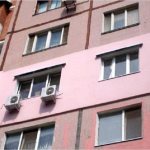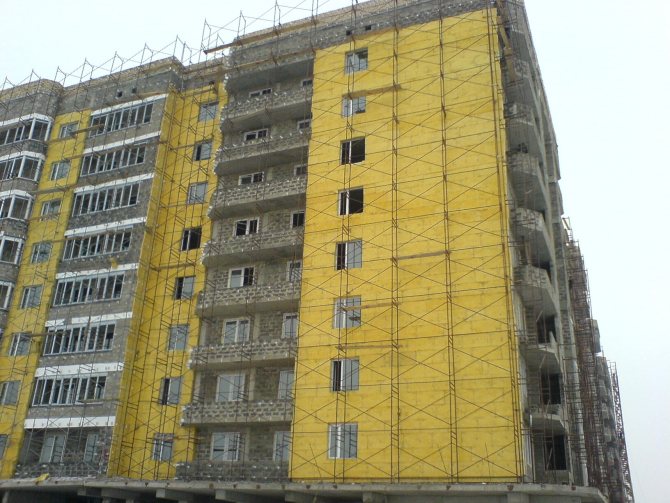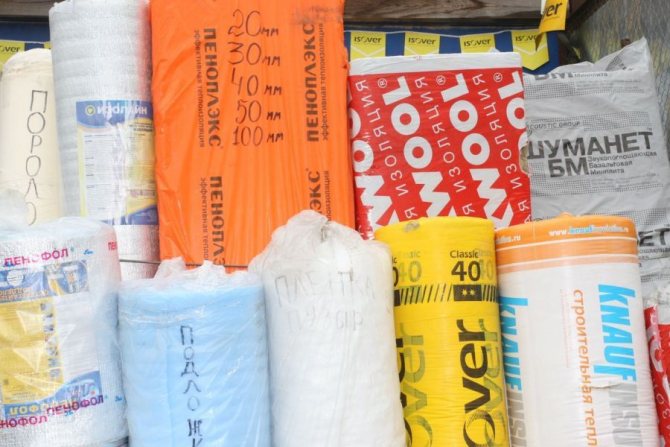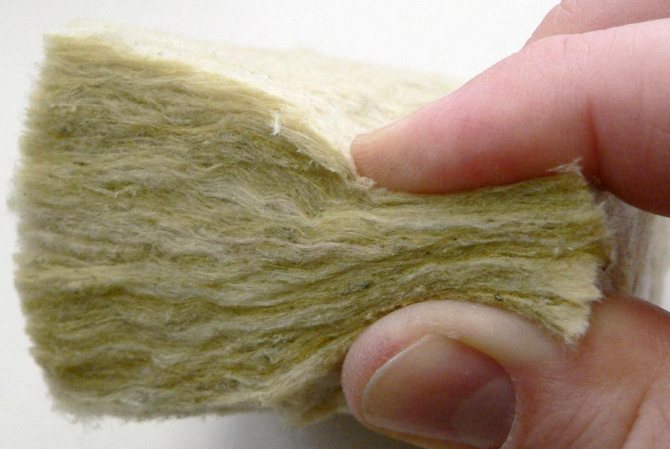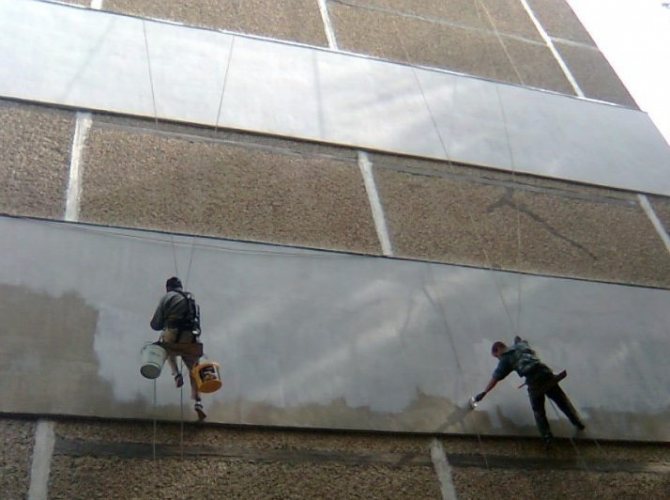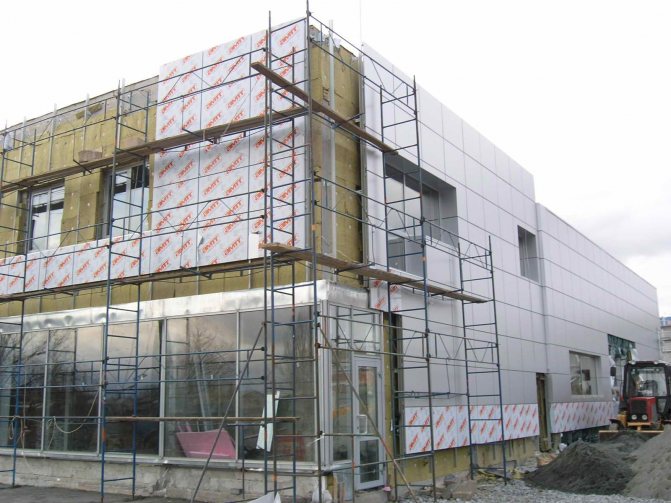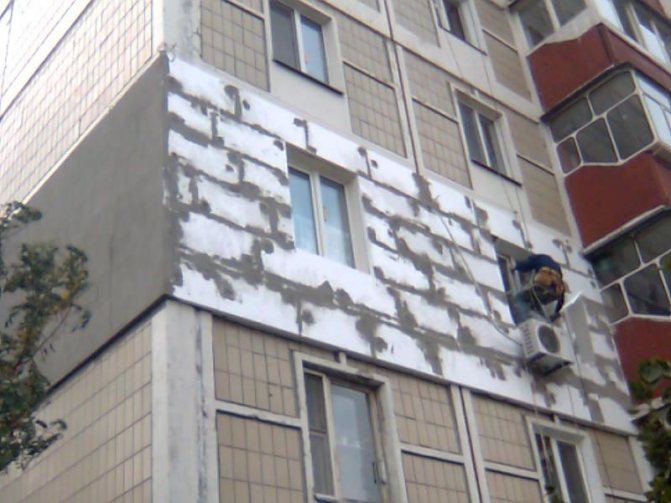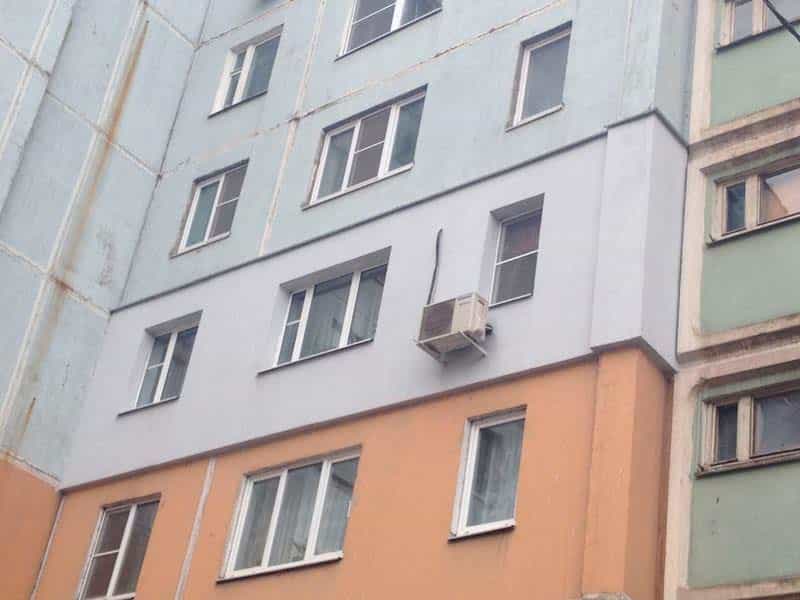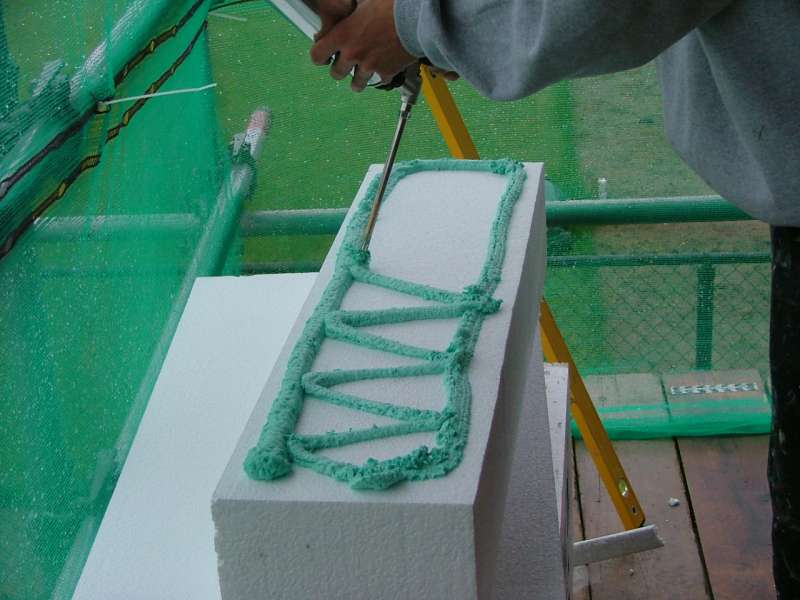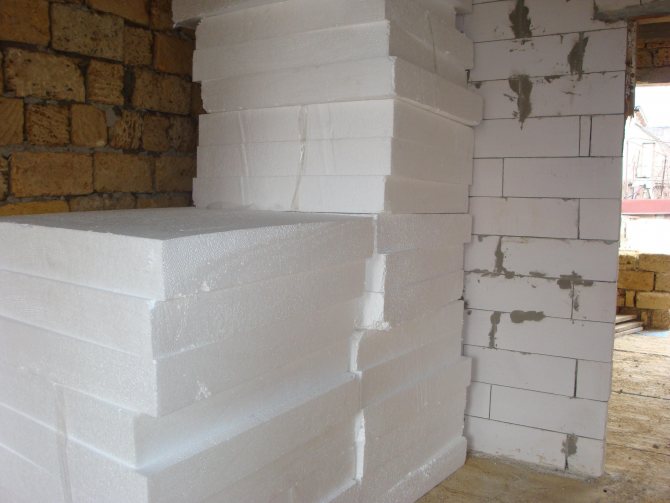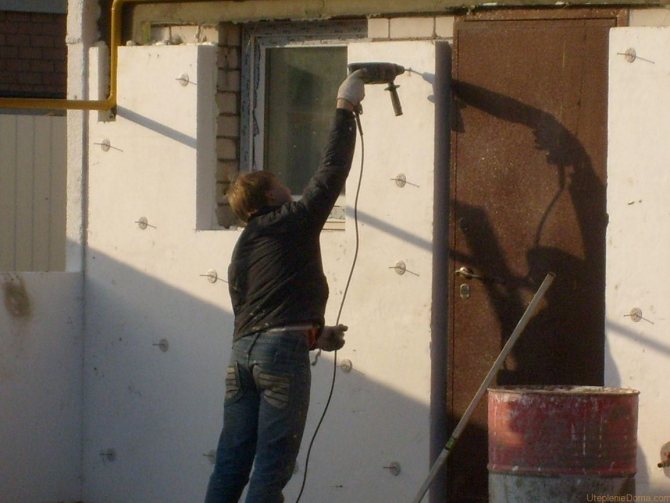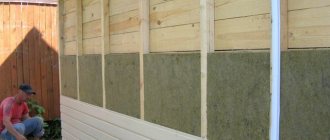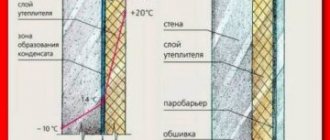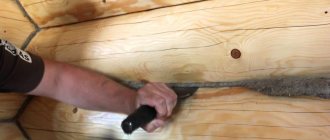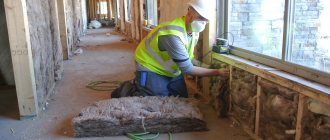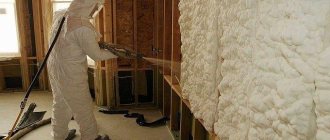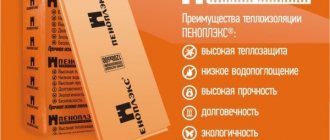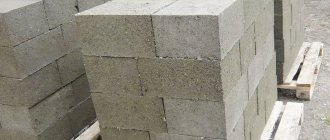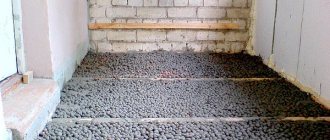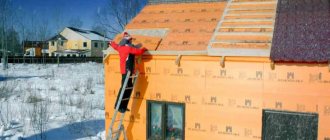Insulation of a panel house is required quite often, because such buildings freeze in winter, the walls are saturated with moisture. This creates mold and mildew indoors and reduces heat levels significantly. This is due to the fact that such buildings, unlike brick ones, are not so resistant to temperature extremes and difficult operating conditions. This problem, however, can be dealt with by providing external thermal insulation.
There are many solutions for this - from the most budgetary to innovative ones - those that can be implemented only with the appropriate equipment. In the latter case, we are talking about sprayed foam, which will cover all irregularities, depressions and cracks, but, at the same time, is quite expensive. The work can hardly be done by hand if it is planned to be carried out in an apartment building, because lifting equipment will be needed, for which you will have to pay rent.
Warming options and methods
When insulating the walls of a panel house from the outside, you can use a variety of materials, including expanded polystyrene, glass wool, stone wool or polystyrene. In order to make the premises more comfortable for living, you can not install insulation sheets at all, but simply trim the outer seams. They are not only filled with building material, but also additionally waterproofed so that moisture no longer gets inside through them, which begins to expand when freezing, reducing the thermal characteristics of the walls. Joints can also be sealed with polymers.
If we consider the methods of attaching a layer of insulation, then it is possible to highlight the gluing of sheets or their mechanical fixation, and further finishing can be continued only three days after the foam is on the wall. If you choose mechanical fasteners, you should purchase mushrooms, which consist of a plastic sleeve. For them, you will additionally need to drill holes, and then cover the heads with plaster.
Methods for insulating the outer wall of a panel house
It is possible to insulate the outer walls of panel houses using two methods of installation: dry or ventilated and wet. Each of the technologies has its own characteristics and advantages, which should be considered separately.
Dry

Insulation in high-rise buildings is laid with a wet method under plaster
With the dry method, you cannot use mixtures with the addition of water. To create a layer of thermal insulation using this technique, a layer of insulation is made, which is closed with shield materials. Finished facades are called ventilated, since an air gap must be left between the insulation and the panel material for the purpose of full ventilation. It is possible to insulate a house in this way with minimal financial costs, especially if you choose the most economical materials, for example, foam.
Wet
The wet method allows you to insulate the surface of the facade using special mixtures with a water base, the composition of which may be different. Most often, a special foamed insulation containing cellulose is used. The main advantage of this method is the ability to fill all holes and crevices. Thanks to the wet method, cold bridges do not appear in the walls, provoking heat leakage from the room.
How to choose insulation
When insulating the facade of a panel house, it is imperative to choose the right material.In this case, one should take into account not only the prevailing direction of the winds and the climate of the region where the house is built, but also the available funds, as well as the features of the facade of the building. Among other solutions, mineral wool should be highlighted, which, although well suited for outdoor work, provides waterproofing and protection from external influences. For this purpose, the insulation is closed with a vapor-permeable membrane, which copes with the task perfectly. You can also arrange a ventilation gap in which the membrane is not needed.
External insulation of a panel house can also be carried out with polystyrene foam, as well as extruded polystyrene foam. These materials have low thermal conductivity, so they can be used to insulate such buildings. If you choose between these two solutions, then you should think about foam. It is lightweight and easy to install. The apartment after such work will also be soundproofed. This is especially true if your windows open onto a playground. By installing additional plastic double-glazed windows, you will be less likely to hear screams from the playground on summer evenings.
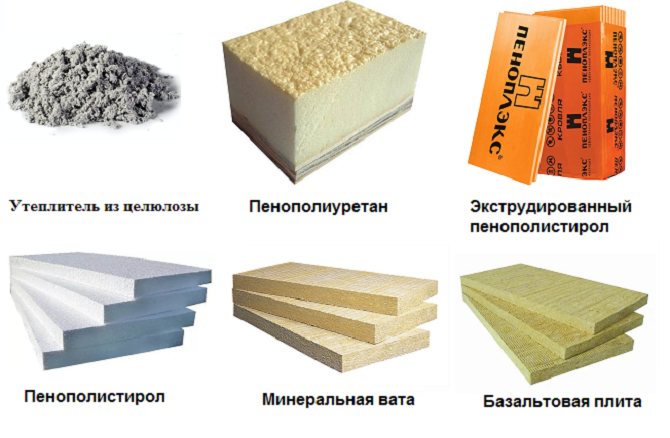

It is better to insulate the outer walls of a panel house with material marked G1, which indicates the inability of the canvases to maintain combustion. By choosing the fibrous structure of stone wool, you get insulation that has a low density, but does its job well. Although this solution is inferior to the first two options described above in terms of thermal conductivity, it does not ignite or rot. The layer will not deprive the wall of its ability to breathe. That is why, when choosing a material, one should take into account the fact that among the main characteristics there is a wind and steam capacity.
Another option for insulating the walls of a panel house is a relative novelty in the construction market - foamed polyurethane. It is known today as foam rubber or polyurethane foam. In the latter version, the material is used to fill the gaps.
You can choose a convenient application option by choosing a spray-on method of insulation or installation of plates.
When insulating apartments in panel houses, polyurethane foam sheets should not be used if you plan to equip a wet facade, since the canvases have a low degree of retention capacity for peel. But this material forms the basis of sandwich panels, and is also used in the manufacture of thermal panels, which are suitable for outdoor installation. But the wet facade system is almost always used in apartment buildings with partial insulation, but in the case of a private house, the choice of external cladding is somewhat wider.
If necessary, you can use sprayed PU foam to form a seamless layer. This requires professional installations that ensure the mixing of the components during the application. For domestic use today, the production of one-component foam has been established, which is sold in an aerosol can. The apartment can be quite effectively insulated with another new material, which is created on the basis of cellulose fiber. Application is carried out using a special installation. Thermal insulation can be placed between the wall and the outer sheathing or on the batten. In the latter case, adhesive binders must be present in the mixture. At the final stage, the facade panels are installed.


External insulation works
Residents of panel houses, after insulating the loggia (balcony), windows and the front door of the apartment with their own hands, do not always achieve the desired temperature comfort of housing. The understanding comes that it is necessary to insulate the walls as well. The question arises of how to insulate a panel house, its walls.
Retreat is an option for violators of SNiP and SP recommendations
Some, despite the above regulatory documents, where it is strongly recommended to carry out insulation outside, still decide to do it from the inside. It will be useful for such "violators" of professional recommendations to familiarize themselves with some liquid thermal insulation materials (thermal paints) in order to minimize the harm from such a choice, which SNiP and SP do not welcome.
Liquid thermal insulation (thermal paints) is an innovative material.
Applying them from inside a panel house apartment, we achieve:


The process of applying liquid thermal insulation to the surface
- Improving the thermal insulation of the panel.
- Its aesthetic appearance.
| № | Liquid thermal insulation grades |
| 1 | Actor |
| 2 | Armor |
| 3 | Magniterm |
| 4 | Corundum |
| 5 | Teplosil |
| 6 | Isolatte |
| 7 | Inotek |
| 8 | Teplomett |
Advice! From domestic products of manufacturers of liquid thermal insulation, for the treatment of internal walls of housing, we can advise specifically the thermal paint AKTERM "Anti-condensate", liquid ultra-thin thermal insulation "Bronya", "Korund".
We make such a choice based on their properties:
- thermal efficiency - 1 mm of their coating corresponds to 50 - 60 mm of foam;
- vapor permeability;
- does not smell;
- does not burn.
Example of AKTERM products
But, probably, this is exactly the case when you should send everyone to hell with their advice on insulating an apartment from the inside, especially in thin-walled old Khrushchevs. Nevertheless, it is more competent (according to the recommendations of SNiP and SP), from the very beginning to immediately tackle the issue of how to insulate a panel house from the outside.
Insulation of seams of residential buildings from panels
Useful to read the following documentation
| № | Norms |
| 1 | VSN 54-96 Instructions on the technology of sealing and thermal insulation of joints of panels, window and door blocks using "Macroflex" in residential buildings during repair |
| 2 | Warm seam technology based on BCH 54-96 instruction |
| 3 | TR 196-08 Technical recommendations on the technology of sealing and sealing joints of external wall panels |
| 4 | TR 94.10-99 Technical regulations for operational quality control of construction and installation and special works during the construction of buildings and structures Clause 10. Sealing of joints of external enclosing structures |
| 5 | TR 95.07-99 Technological regulations for the production of construction and installation works during the construction of buildings and structures. Clause 07 Sealing joints of external enclosing structures |
| 6 | VSN 19-95 Instructions on the technology of sealing butt joints of panels of external walls of residential buildings and social and cultural buildings |
| 7 | VSN 40-96 Instructions for sealing joints during the repair of prefabricated buildings |
| 8 | SNiP 3.03.01-87 Bearing and enclosing structures |
Sometimes it is enough to carry out high-quality sealing of seams to make the house much warmer. Installation of a heat seam increases the temperature in living quarters by 3-4 degrees.
Note! It is necessary to try to insulate the seams in a panel house with elastic materials, since: the seams and after their sealing can expand due to stresses on the building; too hard material, embedded in rust, with strong adhesion (sticking) to the panels, when it expands / contracts, it will simply begin to crack over time.
Materials for the popular installation of a warm seam:
- Flexible heat-insulating seal VILATERM (foamed polyethylene) of various standard sizes.
VILATERM in the form of a solid cylinder (can be produced with a hole)
- Winter polyurethane foam MACROFLEX (its analogues, foamed polyurethane foams).
- Non-shrinking sealant SAZILAST 24 (its analogs, one- or two-component mastics).


Sealant SAZILAST 24, for interpanel rustic materials (with a planned deformation of a maximum of 25%)
Insulation of seams in panel houses of old buildings, instructions:
- We open the old seam.
- Dismantle the old layer of protection.
- We take out the old heat insulator.
- If necessary, we correct the rust with a repair mortar (we restore the crumbling edges of the panel), according to the dimensions of the new heat-insulating sealant and filling it with polyurethane foam.
- We clean the seam from dirt and dust.
- We fill the space inside the Rusta with MACROFLEX polyurethane foam;
- We roll up flexible heat-insulating pipes VILATERM on the still movable foam.
- Places where the foam is unevenly distributed, additionally fill with foam.
- We are waiting for hardening, complete polymerization of the foam, cut off its smudges, excess.
- We make waterproofing of the resulting interpanel heat-insulating seam using SAZILAST 24 sealant.
Note! You can do without a heat-insulating sealant by filling the entire cavity of the interpanel joint with high-quality polyurethane foam. But, you cannot leave the heat-insulating joint without the protection of the sealant. Mounting foam for wall insulation will quickly lose its thermal insulation properties under climatic influences, physically crumble.
Note! It is necessary to dismantle a very old heat-insulating joint, and not apply a new sealant, sealing mastic, mortar, liquid thermal insulation to it.
Insulation of front and end walls of panel houses
Insulation of the facade of a panel house and insulation of the end walls of panel houses do:
- wet method (with building mixtures, which requires the use of water);
- dry method (installation of an additional heat shield outside the wall);
- a combination of the first two methods.
The main advantages of the wet method:
- applied in a continuous layer, which does not allow the presence of cold bridges;
- evaporation of accumulated moisture into the street;
- its decorativeness (decorative plaster), aesthetic appearance.
The main advantages of the dry method:
- strength and durability;
- variety of materials and installation options for heat shield structures.
Instructions for insulating front and end panel walls with polystyrene foam, extruded polystyrene foam:
- We carry out an audit of the joints of the panels (rustic), for their operational condition.
- If necessary, we replace the old hydro- and heat-insulating seam in them (as described in the article above).
- Preparing the panel wall itself... We remove all unnecessary coatings, dirt, oils that reduce adhesion from the wall. Primer, if necessary.
- Apply the ready-made adhesive mixture with a spatula to the surfaces to be glued. Ceresit CT 83 (good adhesion, vapor permeability, economy). You can also use Moment, Economics adhesives.
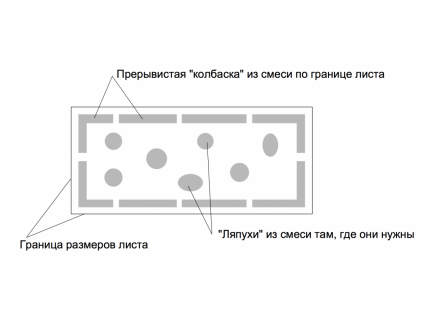

Technology for applying glue to foam
- We attach the foam sheets (tightly to each other) to the wall panels... If necessary, attach the starting profile at the bottom of the masonry. We fasten the sheets from bottom to top, in a checkerboard pattern. You can use two fastening methods to distribute the adhesive more evenly under the sheet:
- rotational movements;
- or we put the sheet a few centimeters away from the desired place, and then, by pressing on it, we shift it to the installation place.
- Using a punch (with a limitation in the length of the fastener) and a hammer, until the glue dries, we fix the sheets to the panels mechanically... For fastening we use plastic dowels - nails (builders call them "umbrellas").
Impact dowel-umbrella with plastic nailWe select the "umbrellas" by length - the thickness of the insulation plus 5-6 cm (the expanding part of the dowel - the nail must enter the panel at least 5 cm). Consumption of "umbrellas" - 4 pieces per 1 m2 (at the corners of the facade and the end of the "panel", around window and door openings - 6 pieces).
Advice! Do not use metal "umbrellas" so that they do not become cold bridges.
- Using a spatula, we mount a polymer reinforcing mesh on foam sheets... We begin to glue the mesh from the corners of the facade and the end of the panel house. Press the mesh into the first layer (2-3 mm) of glue, with an overlap of 10 cm. Level the surface with the second layer of glue.
- After the adhesive layer has dried, you can apply a protective and decorative topcoat.which you like.
Important! Having insulated the front and end walls, do not forget to pay attention to the thermal insulation of the windows.
Types of insulation for panel houses
Insulation of the facade of a panel house can be done with one of the types of thermal insulation. It can be represented by slabs or rolls when it comes to mineral wool. If you prefer to work with foamed materials, then rigid or liquid versions should be distinguished among their main types. For example, when insulating joints in panel houses, foam is used, which, after application, begins to increase in volume, filling the hollow space.
Mineral wool
Insulation of facades of panel houses is often carried out with mineral wool. This material is divided into several varieties, among them it should be highlighted:
- glass wool;
- slag wool;
- stone wool;
- basalt wool.
The first has characteristics of strength and elasticity. When working with this material, you should wear protective clothing and protect the organs of vision and respiration. Thermal insulation of a panel house with mineral wool is less often carried out by its slag variety, since it has lower heat resistance rates. In order to create better conditions in the room, a thicker layer of insulation should be installed. If you want the walls to continue to breathe after insulation, you can choose stone wool, which copes well with high temperatures. Insulation of the facade of a panel house will be most effective if you use a basalt variety of wool. It differs from stone in that there are no harmful inclusions in the composition, which allows the material to endure temperatures up to 1000 ˚С. The layer does not burn, which is important when working with the facades of private houses.
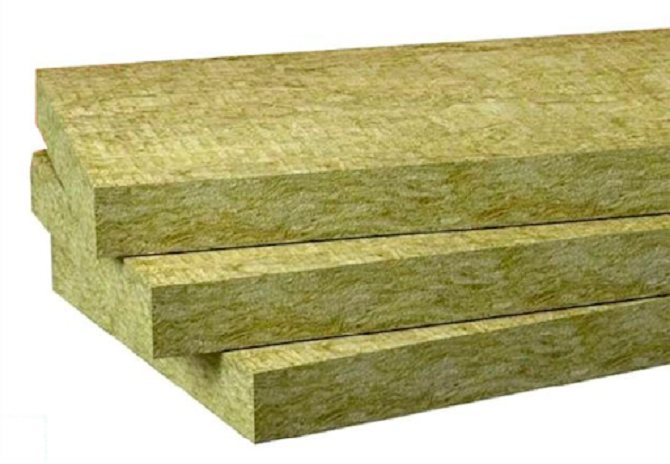

Extruded polystyrene foam and foam
External insulation of an apartment in a panel house can be carried out with rigid polystyrene foam plates or polystyrene foam. The advantage here is the cost savings for the installation of the ventilation façade. The structure of the canvases is very dense, the walls after insulation do not stop breathing, which eliminates the need for a ventilation system.
The materials are very fragile, but have many other advantages such as low weight and ease of processing. Microorganisms do not form on the surface, moisture does not affect it, which does not penetrate inside. The service life is not limited, and installation is very simple. The materials are affordable and able to withstand all weather conditions.
These solutions, however, have two important drawbacks, which are the ability to burn and melt.
If we compare these two options according to the principle of moisture absorption, then extruded polystyrene foam does not have as high moisture absorption capacity as foam. In terms of sound insulation, these materials are not inferior to each other. If density is important to you, then foam is 4 times lower than that of its competitor. If you still cannot decide what material to use when insulating a corner room outside in a panel house, you should pay attention to the global trend that involves replacing foam with extruded polystyrene foam. Today it is more popular, modern and has more outstanding quality characteristics.
Speaking about specific manufacturers, the extruded polystyrene foam from TechnoNIKOL is a material with unique qualities. It is not only affordable, but it can also be used for different surfaces. When purchasing material for walls, you can use it in the future for plinths, roofs and foundations. The canvases do not absorb moisture, which means they do not swell and shrink over time. Chemicals can attack their surface without damaging the structure.
The material has high strength. The layer will be resistant to rodents and insects, and heat retention will be 1.5 times more effective than foam and twice as effective as glass wool or stone wool. There is no formaldehyde among the ingredients, the material does not emit odor and provides a high installation speed. The service life can be up to 50 years. During the entire period of use, the material will not be hazardous to health.
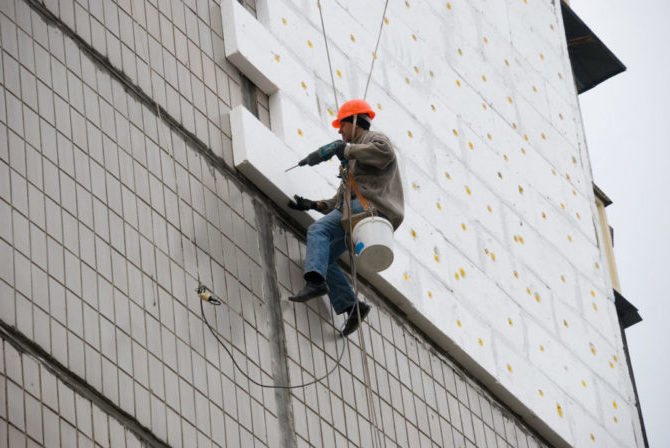

And what material to choose for the insulation of apartments in Bryansk?
It is necessary to choose material for external insulation of apartments based on its characteristics, method of work and financial capabilities.
Mineral wool
Minvata (basalt fiber) is a material that can be used to insulate walls in an apartment, both outside and inside. A protective coating must be laid on top of the mineral wool. Indoors, such can be drywall, plastic, etc., and outside - siding, profiled sheet and other sheet building materials that are resistant to the aggressive influence of environmental factors. Basalt wool is inexpensive and can be easily attached even to uneven walls.
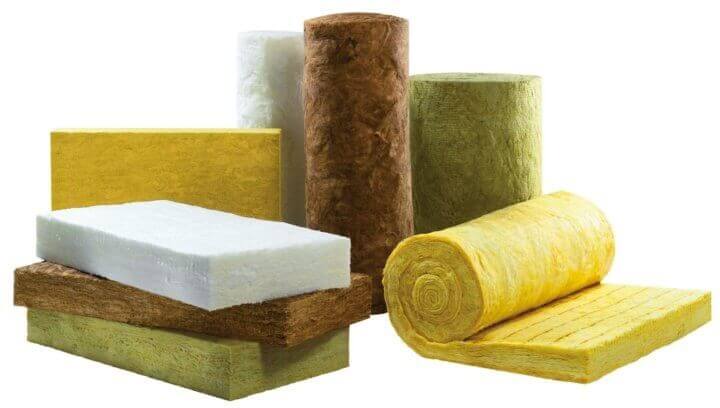

It should be noted that only mineral mats with a density of at least 80 kg / m³ can be used for external insulation.
Expanded polystyrene
It has been used in thermal insulation works for quite some time. It is characterized by low moisture absorption and lightness, as well as ease of cutting, which can be carried out without the use of special tools. This also includes foam insulation of apartments.
Difficulties can arise only when insulating walls with a large number of irregularities. In this case, before making the insulation, it will be necessary to carry out a rough plaster.
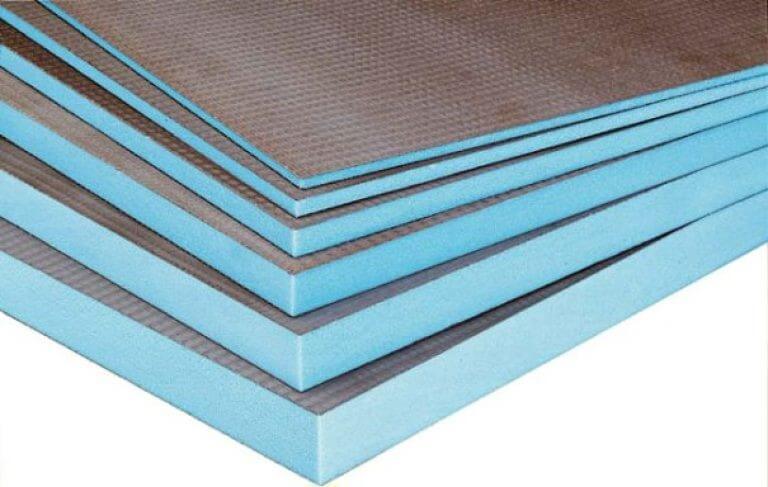

Keep in mind that foam plastic with a density of at least 18 kg / m³ can be used to insulate the facade.
Plastering
Thermal insulation plaster is a new fashionable invention in construction for creating thermal insulation of the facade from the outside. It represents various types of building mixtures, in which there is cement mixed with polymeric substances and a porous filler based on minerals. To work with such plaster, it is necessary to prepare the surface in advance.
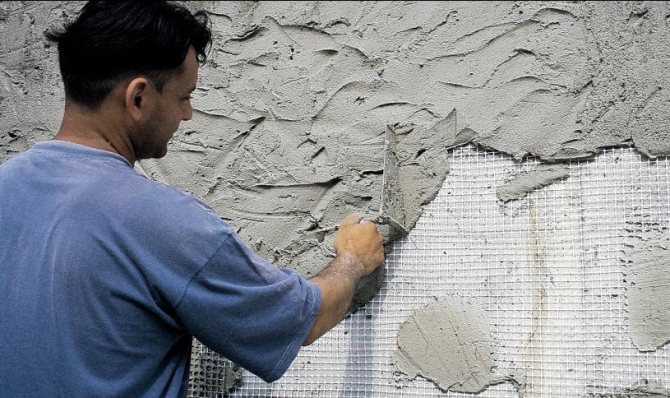

The process is similar to the preparation of walls for an ordinary plaster mixture. Thermal insulation of houses with heat-insulating plaster is done by analogy with work using ordinary plaster.
Foam insulation
In fact, it is a polyurethane foam sealant, packaged in aerosol containers. Most often, a one-component composition is meant, which, after leaving the cylinder, foams, expands, and hardens under the influence of moisture contained in the air, forming a porous gas-saturated structure with an open cell.


This product is very good for use in hard-to-reach areas, and the condition of the facade will turn out to be no worse than when finishing with other insulation materials. After the foam is completely dry, the walls are completely breathable.
Which of the presented materials to choose is entirely up to you. And remember that the most important thing in construction and renovation is to think through everything in advance. Therefore, weigh all the pros and cons before starting work and everything will work out for you.
Stages of the facade insulation process
Insulation of the walls of a panel house is sometimes a necessary procedure, since such buildings have never been famous for comfortable living conditions in the cold. This is especially true if the building is old and the heating system no longer meets the requirements for normal operation.
First you need to pick up the material. If you are guided by price, then choose foam, since it is the most affordable today. The canvases are lightweight, which means they can be easily lifted to a height and held during installation.The disadvantages here are known to everyone, they lie in the fragility of the material and fire hazard. These disadvantages can be eliminated by overlapping the layer using the plastering method.
It is best to insulate a panel house with foam plastic with a material whose density exceeds or is equal to 18 kg / m3. Mineral wool is more durable, it does not burn and is environmentally friendly. But it costs more, and when working, you will have to additionally use special clothing and glasses. When choosing this material, it should be borne in mind that its density should be equal to or greater than 85 kg / m3. It is also important to consider the roll thickness, which should be 100 mm or more. This applies to mats and slabs.
Preparatory stage
When insulating an apartment outside in a panel house, it is necessary to prepare everything for work. The boards are usually installed with construction adhesive. You can purchase it ready-made or dry. For mineral wool and foam, there are different types of compositions, but if you wish, you can purchase a universal mixture.
The walls will need to be freed from contamination, for this you should also arm yourself with some tools. Seams should also be repaired, which are filled with foam or liquid polyurethane foam. When insulating panel houses with foam and mineral wool, mechanical fasteners in the form of plastic dowels are used.
Before starting work, it is recommended to treat the walls with a primer, which is necessary to increase adhesion. After installing the material, it is covered with a mesh. It can be steel or fiberglass. Insulation of panel houses with polystyrene means the use of perforated corners. You can choose those made of aluminum or galvanized steel. For finishing work, you will need decorative plaster or paint, it will all depend on what your budget and finishing preferences are.
When buying insulation, you should determine the surface area of the wall and the area of one slab. The first value is divided by the second, which will allow you to get the number of sheets that will be needed for insulation. To this value should be added about 15%, which will be used for pruning.
Insulation of a panel house begins with the preparation of the walls. Old coatings are removed from all surfaces, be it plaster, whitewash, ceramics or paint. The base should be cleaned of dust and dirt. If necessary, the surface is washed with water and left to dry. Then you can proceed to the insulation of the joints of the panel house between the plates. The seams are filled with foam. If their space is too narrow, then it is better to decipher so that the seam itself does not increase when used under a layer of insulation. The surface of the seams is cleaned and moistened, then construction foam is poured into it. Alternatively, concrete putty can be used. After these materials have dried, the excess will need to be knocked down. Outer walls are well cleaned.
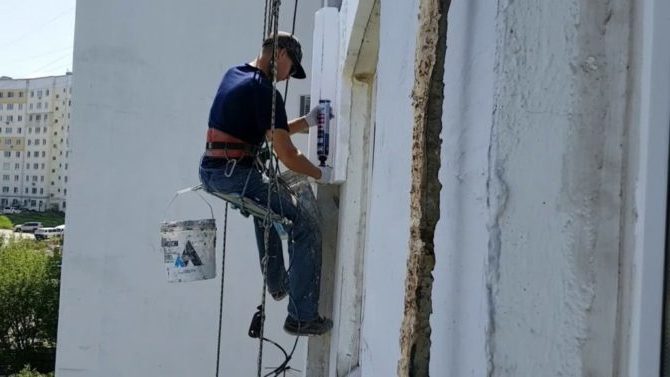

Insulation installation
The technology of insulating panel houses at the next stage provides for the installation of thermal insulation. In order to ensure a more economical consumption of glue, you should purchase it dry. Mixing is easy, just add water and stir. The mixture is applied to the reverse side of the insulation with a notched trowel.
If the walls are uneven, they can be leveled with plaster. The composition is applied in lumps, and then distributed. To insulate a room from the outside, you need to start from the corner, moving to the side, and then up. The position of each sheet is controlled with a building level. The second sheet is glued on the opposite side of the surface. A cord should be pulled between the canvases, along which all other sheets will be attached. To maintain horizontality and verticality, corner beacons are installed on the wall. They are fastened to plaster or alabaster.According to this algorithm, the first row is installed. The layer of glue should not turn out to be too thick, otherwise you will be faced with its overuse. All subsequent sheets in other rows must be stacked with an offset so that cold bridges and long seams do not form.
At the corner of the house, you need to ensure the binding of the sheets along the edge. The material should be reinforced with umbrella dowels. There should be 5 of them on one sheet. One should be placed in the center, the others along the edges. For fasteners, holes are additionally drilled in the sheet.
Preparation for reinforcement
The layer of plaster on the insulation must be leveled. The fastener caps are overlapped with the mixture. A perforated corner is installed on the outer corners. It is fixed with glue. The gaps between the sheets must be filled with polystyrene, placing it on the same glue.
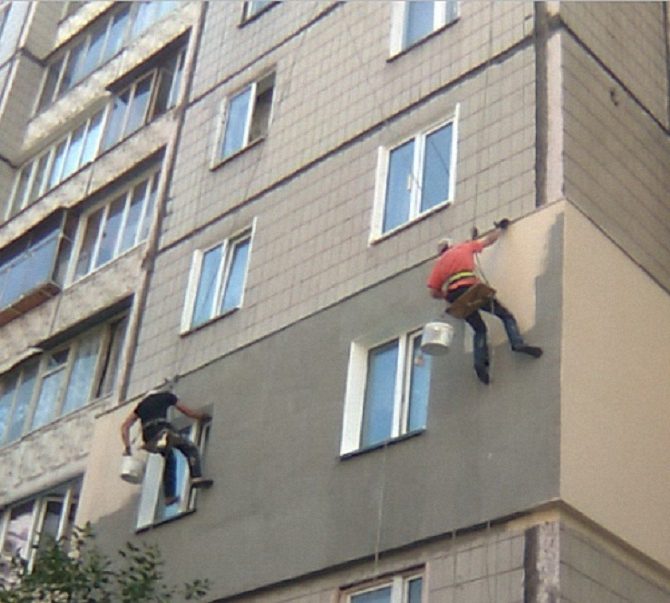

Finishing
The reinforcement mesh must be fixed to the slopes of the windows. Apply 3 mm of glue to the same surface. As soon as the first layer of mortar is dry, you need to apply another one and level it with a spatula. Once the reinforcement of the slopes has been completed, you can begin to install the mesh over the rest of the surface area. The walls are primed and painted as needed. After applying the primer, plastering can be done. The first layer is rubbed with a small piece to give the surface a patterned texture. At the last stage, the walls can be painted with an acrylic compound, which is pre-tinted if necessary. The paint is applied with a roller.
Insulation installation technology
Preparing the walls
Immediately before the walls are insulated, the working surface is prepared. All irregularities are smoothed out and sealed with a primer. Seams and facade finishing require special attention.
All peeling paint should be cleaned as well as peeling finishes. To check its quality, it is enough to move your hand along the wall. If the palm is clean, no primer is needed. If there are any problems, it is better to play it safe.
Insulation installation
For insulation of a panel house, foam is more often used, therefore, we will consider the technology of its fastening.
If you live on the ground floor and decide to carry out the insulation yourself, then you will need a large and small spatula to apply glue to the wall.
It should be noted that there are three methods of fixing it: on glue, on dowels, or both together. It is most effective to use glue and dowels together.
The walls are pasted from bottom to top. A starting bar is nailed in the lower part of the facade. If the walls are uneven, then the glue can be “thrown” on, on flat surfaces it can be applied with a comb.
Fill the seams meticulously. It makes no sense to apply glue to the insulation sheet. So that there are no cavities under the foam, fill all the cavities and irregularities of the walls with an adhesive solution. Otherwise, voids will create additional "cold bridges" through which heat will leave the apartment.
When the surface is glue-coated, you can attach a sheet of styrofoam and press it well against the wall. Before the next stage of work, it is better to wait a few days so that the glue solution is completely dry and the insulation shrinks, and then continue working.
To fasten the insulation, dowels are used - fasteners consisting of a circle, a plastic sleeve and a galvanized nail, which is hammered into the sleeve. Since styrofoam is lightweight, plastic nails can also be used. They will save the facade from unnecessary heat loss.
To reliably insulate the building, holes are drilled around the perimeter and in the center of the foam glued to the wall. The depth of the hole must exceed the length of the dowel by two centimeters, otherwise the fastener will stick out from the outside. To guarantee reliable insulation, the foam sheets must fit snugly against the wall and against each other.
Watch for clearances.In some cases, it is useful to fill them with polyurethane foam, the excess of which is cut off after drying, and the seams are rubbed and corrected. At the final stage, the dowel caps and seams are puttyed with an adhesive mixture. Small defects that have arisen after the mixture has dried are removed with emery and a plastic float.
Tips from the masters
- End freezing of panel slabs in an apartment building can be a serious problem. Some also carry out internal wall insulation using the drywall installation method. For this, a frame is installed, between the elements of which insulation plates are placed, for example, mineral wool. GKL is installed on top, which is then covered with a decorative layer.
- When insulating a panel house from the outside with foam, according to experts, the material should be purchased only from trusted manufacturers. The company must have a manufacturing license. This is due to the fact that the production technology is very simple, it attracts not very conscientious entrepreneurs. The market is filled with less quality goods today.
- When insulating a panel house with penoplex and then finishing it with plaster, the cladding procedure should be performed in one go. Otherwise, you may be faced with the fact that the joints may be visible to the eye.
- If you decide to carry out insulation with foam, you should take care that condensation does not form between the thermal insulation and the wall. It can appear due to the fact that the glue was applied in separate lumps and is not distributed. This allows the formation of air pockets, which are subsequently filled with moisture coming from the premises of the apartment.
Cost of materials
If you are already fed up with end freezing, it's time to start insulation work. But first you need to ask about the price of the material. For example, Rockwool mineral wool will cost 495 rubles. per packing. The dimensions of each sheet are 50 x 600 x 800 mm. The material is presented in slabs, and its density is D35. The package contains 12 canvases. Knowing the area of each of them, you can calculate how much is needed to carry out the work.
Prices for polystyrene are slightly lower compared to expanded polystyrene. So, you can buy extruded polystyrene foam "TechnoNIKOL" for 1174 rubles. for one package. The length, width and thickness of the material are 1180 x 580 x 50 mm. The canvases are connected to each other by an H-shaped profile, which eliminates cold bridges and reduces installation time. The package contains 8 sheets of 5, 475 m2.
